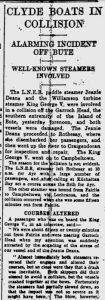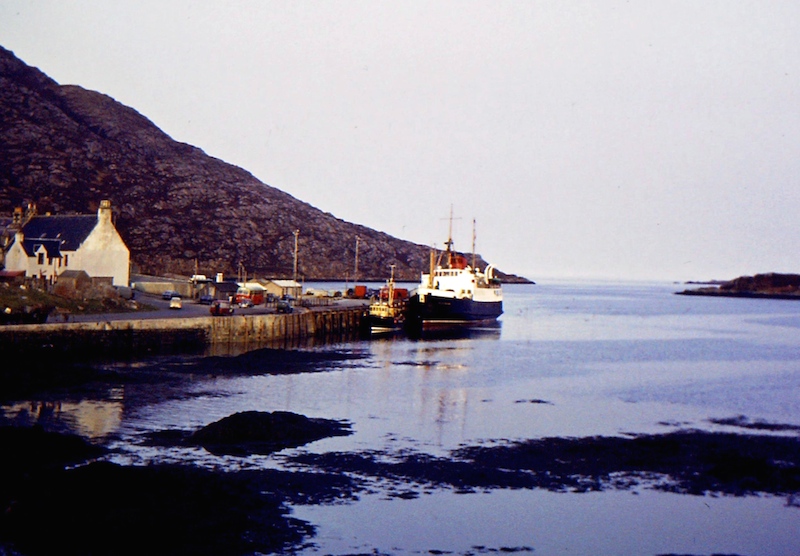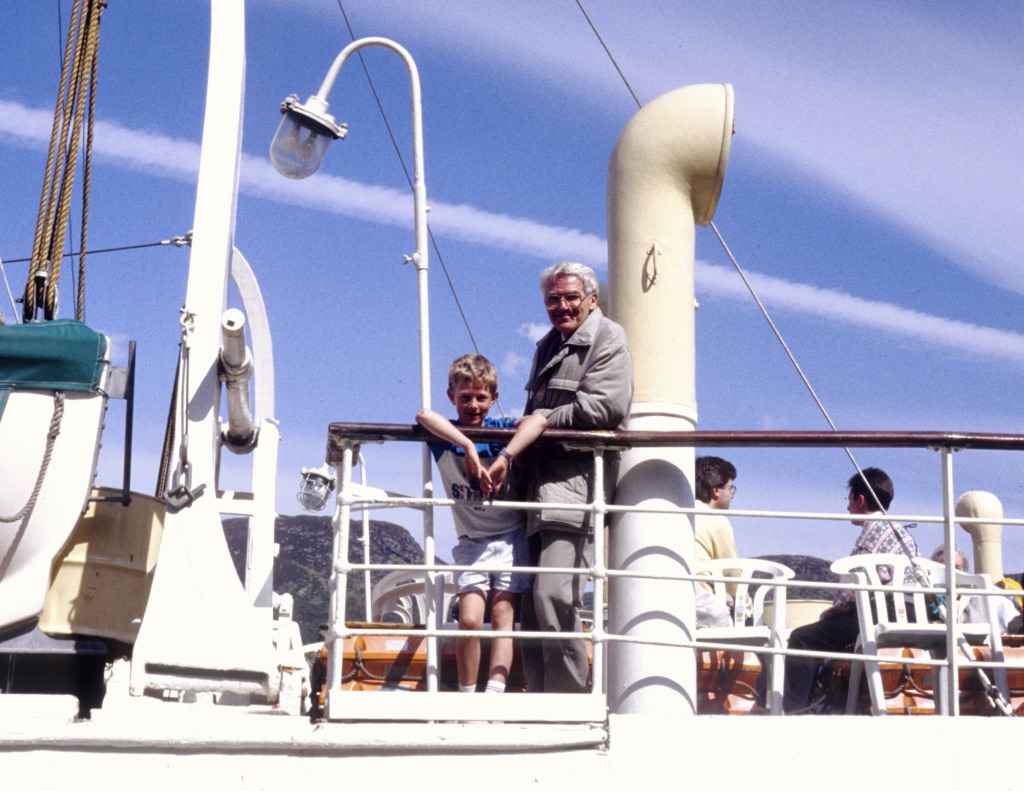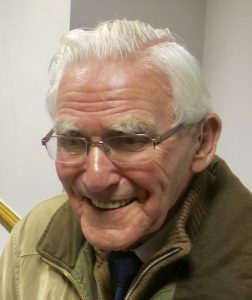CRSC’s recent film night was a reminder that moving images bequeathed by a previous generation of enthusiasts are an invaluable legacy: they show what the steamers of yesteryear looked like when they cut through the water, and what it was like to be on board them.
One of those amateur film-makers was Tom Urie, an active member of CRSC up to a few weeks before his death earlier this year at the age of 93. In addition to his films, now preserved by the National Library of Scotland’s Moving Image Archive, Tom will be remembered for his quiet and kindly presence at Club meetings and outings. We asked his son Robin — like Tom, a CRSC Past President — to tell us how his father’s love of steamers came about.
My father, Tom Urie, studied metallurgy and spent many years in the iron and steel industry, initially in research and latterly in management positions with the British Steel Corporation.
In 1980, aged 55, he took early retirement and re-trained as a chemistry teacher, working at Carluke High School until the age of 65. He retained a connection with the school for a further 10 years by taking on the organising of invigilators for the SCE examinations there.
Dad was born in 1925 and lived in Pollokshaws. He had close relations on a farm in Ayrshire, and less close ones at Rosneath, also on a farm.
He came to know Lucy Ashton while spending holiday time at Rosneath. Later, he was evacuated to the Ayrshire farm and was old enough to be useful. He spoke about a steamer trip to Arran on an expedition related to buying cattle. In his youth Dad also spent some days doing ordinary ‘cruising’. Long before I ever saw it in print, I heard his first-hand report, as seen from the deck of Jeanie Deans, of the collision between her and King George V off Garroch Head on 7 August 1934.
When I was very young he would occasionally go off for a day’s sail, and there are photographs that indicate he did not always get good weather.
For a few years our family had caravan holidays at Ganavan Sands near Oban, and Dad’s interest expanded to the MacBrayne fleet. He made an overnight trip on the new Claymore in 1956. On that occasion he certainly had good weather and the photographs fascinated me.

The Glasgow Herald report of 8 August 1934 on the collision involving Jeanie Deans and King George V, which Tom Urie witnessed
Later holidays were at Millport and, as soon as my brother and I became old enough to appreciate the cruises, we were included. The ‘bug’ bit me in the summer of 1964. My enthusiasm seemed to encourage him. The following winter, on a visit to William Porteous’ bookshop in Exchange Square, Glasgow, my mother bought me MacArthur, McCrorie and MacHaffie’s Steamers of the Clyde and Western Isles.
The book had details of the Clyde River Steamer Club. Dad and I joined. Our first enthusiasts’ outing was the CCA charter of Caledonia to Stranraer, which we learned about at a CRSC meeting. On board that day were other people known to Dad but not expected in this environment.
Dad had bought a 35mm camera in 1953 and recorded his new family on colour slides. In the winter of 1964/65 he bought an 8mm cine camera, with the intention of making amateur mini-documentaries, not simply moving snapshots. The steamers were an immediate subject. A product of 1965 was a record of sails he and I did on Claymore and King George V. It was from this early footage that he developed his enthusiasm for making films on the steamers, on the cruises, and on the River Clyde itself.
Dad was asked to show some films at CRSC meetings, not usually as a full evening. This made him more widely known, and he was eventually invited to be Club President [in the 1977-78 session].
His longer holidays as a teacher allowed him to make a few voyages on the MacBrayne cargo steamers, which he duly recorded on film — when weather permitted.
Dad enjoyed travelling in his holidays, going to places of interest rather than lying on beaches. He spent time in Europe, and in later life he still got a lot of pleasure from finding places in the UK which he had not visited before.
In old age he continued to enjoy trips on Waverley and Balmoral, and was attending CRSC meetings until a short time before his death.
Click here for more information about the National Library of Scotland’s Moving Image Archive. Tom Urie’s films cannot be viewed online, but you can read a summary of their content here, here, here and here.

Claymore at Lochboisdale, bathed in midsummer evening light. Tom Urie first made the sailing from Oban to Uist in 1956. Copyright CRSC Roy Hamilton Collection
Catch up with all CRSC’s news and reports by clicking here.
Published on 7 December 2018













